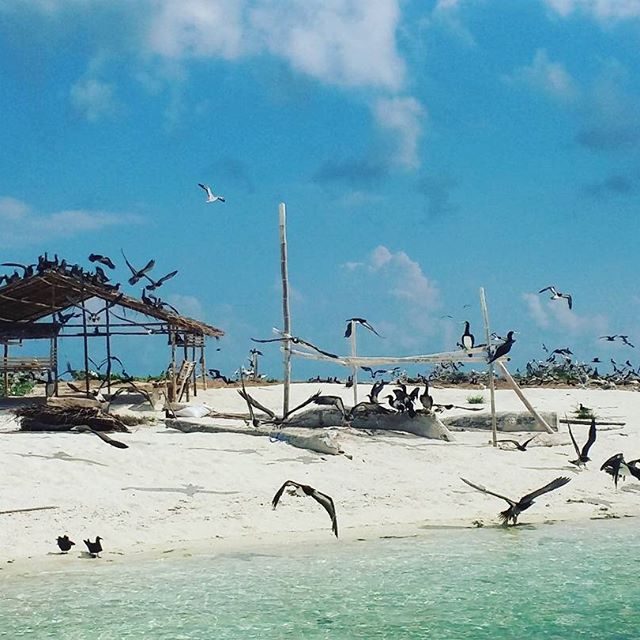SUMMARY
This is AI generated summarization, which may have errors. For context, always refer to the full article.

PUERTO PRINCESA, Philippines – The changing sea currents, aggravated by rising sea levels brought by climate change, are slowly eating up Bird Islet in Tubbataha Reef, the last intact seabird habitat in the Philippines.
The islet, located in the North Atoll of the Tubbataha Reefs Natural Park (TRNP), has shrunk, from a land area of about 1.4 to 1.5 hectares since it was first recorded in 2004, to just 1.1 hectares, said Angelique Songco, head of the Tubbataha Management Office (TMO).
“Bird Islet is the primary habitat for seabirds in the Philippines,” Songco said. “So if we lose it – it would be a great loss to us.”
Latest TMO data show that the two islets in TNRP – the Bird Islet in North Atoll and South Islet in South Atoll – now support at least 38,500 seabirds.
“They are all congregating in that small islet,” and yet it’s diminishing in area “so it does not bode well” for their ever-growing number, Songco said.
Considering most of the seabird species breeding at TRNP are threatened at national or regional levels, since last year it has been included in the East Asian-Australasian Flyway Partnership (EAAFP), an international network created to conserve migratory birds and its habitats.
According to TMO, TRNP is home to no less than 100 species of birds. It serves as the main rookery and breeding ground of the following seabird species:
- Red-footed Booby
- Brown Booby
- Great crested Tern
- Sooty Tern
- Black Noddy
- Brown Noddy
TMO also said that “it is the only known breeding area of the Worcestri subspecies of Black Noddy, one of the few breeding areas of Sooty Tern and Brown Noddy” in the country.
The critically endangered Christmas Island Frigatebird (Fregata andrewsi), regularly appearing 5 at a time, as well as the Chinese Egret, Swinhoe’s Storm Petrel, Eurasian Curlew, and Black-tailed Godwit, also seek refuge in the islets on TRNP, according to TMO.
Believed to be locally extinct over 20 years ago, the Masked Booby reappeared again on Bird Islet on May 11, 2016.
If no interventions are put in place, TMO Researcher Retch Pagliawan believes it would lead to losing the breeding ground for those seabirds.
“If the erosion of the islet continues, eventually it might disappear and the seabirds will lose their habitat,” she said, adding it is particularly noticeable on the northeastern part of Bird Islet.
Pagliawan said the islet’s vegetation area has also decreased, thus speeding up the erosion.
The TMO has sought help from the University of the Philippines-Marine Science Institute (UP-MSI). An oceanographer and geologist from UP-MSI will conduct a study in April 2017, and will propose biodiversity-friendly measures that could halt the erosion, Pagliawan added.
Songco said they are currently “referring to other studies, other interventions done in other locations on how they stop beach erosion.”
“We are going to do those interventions next year,” the protected area superintendent said. “Bringing all of the materials to Tubbataha is going to be a strenuous activity, but we have to do that because seabirds are important to us.”
Asked if the situation in Bird Islet is still manageable, she said: “Is it alarming? Well, if we don’t do anything it’s going to get to that point.” – Rappler.com
Add a comment
How does this make you feel?
There are no comments yet. Add your comment to start the conversation.